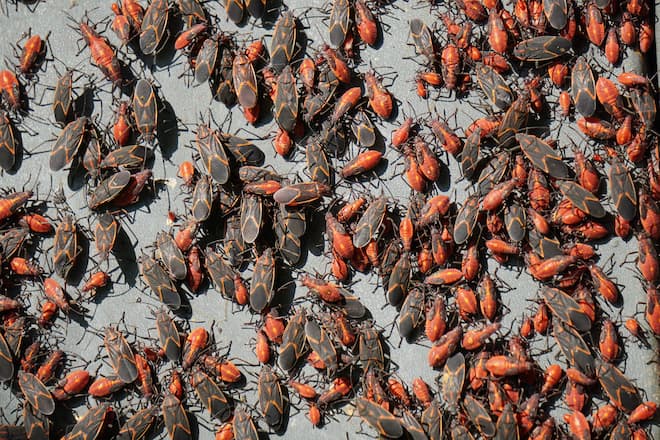Elder bugs, also known as boxelder bugs, are commonly found in North America. They are a type of true bug belonging to the family Rhopalidae. These bugs have a distinct appearance with black and red markings on their wings and body. They are often found in groups on trees and other outdoor structures.
If you have elder bugs on your property, call the professionals from Exterminator Peterborough.
The lifecycle of an elderbug begins when the female lays her eggs. This typically happens in the spring or early summer. The eggs are laid in clusters of 10-20 and are attached to the leaves and bark of trees. The eggs are small and round, about the size of a pinhead. They are initially white but turn a yellowish colour before hatching.
After about two weeks, the eggs hatch into nymphs. The nymphs are small and dark-coloured, and they lack wings. They begin to feed on the leaves and stems of the tree where they were born. As they grow, they molt several times, shedding their exoskeletons and revealing larger versions of themselves.
After about six weeks, the elderbug nymphs reach adulthood. They are now about half an inch long and have developed their characteristic red and black markings on their wings and body. Adult elder bugs are able to fly and are attracted to the warmth of buildings. This is why they are often found indoors during the fall and winter months.
During the fall, elder bugs begin to mate. The males and females engage in a courtship ritual where they touch antennae and vibrate their wings. After mating, the females lay their eggs on nearby trees and other outdoor structures. This cycle then repeats itself the following spring.
Elder bugs do not typically cause harm to trees or other outdoor structures. However, they can be a nuisance when they enter homes in large numbers. They are not known to bite humans, but their presence can be irritating, and their excrement can leave stains on walls and other surfaces.
To prevent elder bugs from entering your home, it is recommended to seal cracks and crevices around doors and windows. Insect screens on windows can also help keep them out. If elder bugs do enter your home, they can be removed using a vacuum cleaner. It is important to avoid crushing them, as they can emit a foul odour when they are squished.
the lifecycle of an elder bug begins with the laying of eggs in the spring or early summer. The eggs hatch into nymphs, which moult several times before reaching adulthood. Adult elder bugs mate in the fall and lay their eggs before the cycle begins again the following spring. While elder bugs can be a nuisance when they enter homes, they are harmless to humans and do not cause significant damage to outdoor structures.


